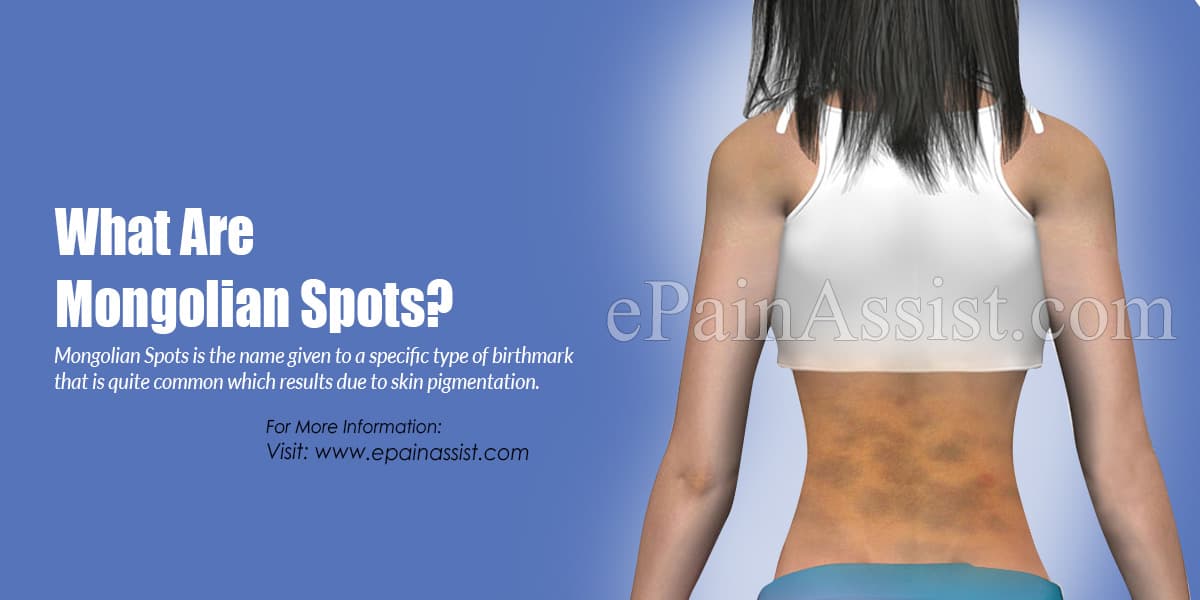What Are Mongolian Spots?
Mongolian Spots is the name given to a specific type of birthmark that is quite common which results due to skin pigmentation. Mongolian Spots medically is termed as Dermal Melanocytosis. Mongolian Spots are clearly visible on the skin of the baby right at the time of the birth. Mongolian Spots are known to people for centuries and have been linked to various myths and religious beliefs. There is no way to prevent Mongolian Spots and there is no clear understanding as to why these spots develop in the first place in some babies and not in others.[2]

Some experts believe that these spots occur when some of the skin pigment gets trapped within the deeper layers of the skin when the fetus is in the developing stage. This entrapped pigment is not able to reach the surface of the skin and results in a green, gray, or blue mark on the skin.[2]
Mongolian Spots are completely benign and eventually fade away with time. However, if recent studies are to be believed then Mongolian Spots have been linked to various metabolic abnormalities in the baby. This theory has been arrived at due to the well-known relationship between central nervous system and melanocyte levels.[1]
What Causes Mongolian Spots?
As stated, there is no clear understanding as to why Mongolian Spots develop. It has been observed though that dark-skinned children tend to get it more than others. This is the reason why Mongolian Spots are seen more in Asian, Native American, African, and Hispanic population. These spots are mostly observed in the back and the buttocks.[2]
There is no gender bias with the development of Mongolian Spots and both boys and girls get equally affected. These spots look like bruises and do not cause any pain or other symptoms.[2]
How Common Are Mongolian Spots And Do They Pose A Health Risk?
According to the American Academy of Pediatrics, around 2% of babies born in the United States have some kind of birthmark, including Mongolian Spots. However, there are many experts that believe that the incidences of children born with Mongolian Spots are much higher. Another study claims that approximately 10% of Caucasian babies, 45% Hispanic, and 95% in black babies have Mongolian Spots.[2]
With regard to whether these spots pose any health hazard, Mongolian Spots are completely harmless. However, as stated, in rare cases they have been associated with certain metabolic abnormalities like Hunter Syndrome, Hurler Disease, and Niemann Pick Disease. This link is more in children who have large areas of Mongolian Spots and spread across the body apart from the back and buttocks. These incidences are extremely rare and more research needs to be done to come up with concrete evidence of the association of Mongolian Spots with these abnormalities.[2] According to the Spina Bifida Association in some cases Mongolian Spots are an indicator of a defect in the spinal cord but there is no evidence of such.[2]
How are Mongolian Spots Treated?
It is essential for physicians to make a record of the Mongolian Spots immediately after the baby is born. This is necessary to prevent any suspicion of a physical abuse later on should the marks remain since they have significant resemblance with bruises. The status of these Mongolian Spots can also be looked at during well-child visits to ensure that the spots are fading away with time.[2]
Studies show that majority of the Mongolian Spots fade away by the time the child is 5 years of age. However, in some instances, they do not go away completely and the person is left with a birthmark for the rest of the life. There is no specific treatment for this condition. They are completely benign and do not pose any threat to the overall health of the child.[2]
Another point to consider is the fact that most Mongolian Spots occur in the back and buttock area and should not be even a cosmetic problem since these areas are not exposed. However, some people seek treatment to get rid of these spots purely for cosmetic reasons. For this, laser removal is believed to give positive results Mongolian Spots. The specific laser that is used to get rid of Mongolian Spots is the Alexandrite Laser.[2]
A study suggests that this treatment is most successful in people under the age of 20. Additionally, the side effects of skin darkening due to laser treatment can also be minimized if done within this age.[2]
With regard to the prognosis, Mongolian Spots are completely harmless even though they may have some association with certain medical conditions. With proper checkup of the child and lack of any other health concern, Mongolian Spots should not pose any problem for the child with regard to the health.[2]
In majority of the cases, children outgrow Mongolian Spots and even these spots remain they do not interfere with the normal life of the individual. Many people do not bother about these spots as they are normally present on the unexposed parts of the skin. However, some people go for treatment purely for cosmetic purposes. For them, laser removal is perhaps the most preferable form of treatment for Mongolian Spots.[2]
